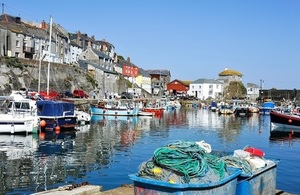News story: Matt Hancock: shake-up of GP IT will remove outdated systems
The GP IT Futures framework will create an open, competitive market to encourage the best technology companies to invest in the NHS. All systems will be required to meet minimum standards to ensure they can talk to each other across boundaries.
The current market is dominated by 2 main providers, which slows down innovation and traps GP practices in long-term contracts with systems that are not suited to the digital age.
The framework will look at how patient data will be moved to modern cloud services to allow clinicians and patients to securely access crucial, life-saving information in real time.
By 2023 to 2024 we want every patient in England to be able to access GP services digitally, with practices able to offer online or video consultations.
The changes will free up staff time and reduce delays by allowing seamless, digitised flows of information between GP practices, hospitals and social care settings. It builds on Health and Social Care Secretary Matt Hancock’s tech vision for the NHS.
The new standards, developed by NHS Digital, will introduce minimum technical requirements so systems can talk to each other securely and are continuously upgradable.
Any system that does not meet these standards will not be used by the NHS and the government will look to end contracts with providers that do not understand these principles for the health and care sector.
Health and Social Care Secretary Matt Hancock said:
Too often the IT used by GPs in the NHS – like other NHS technology – is out of date. It frustrates staff and patients alike, and doesn’t work well with other NHS systems. This must change.
I love the NHS and want to build it to be the most advanced health and care system in the world – so we have to develop a culture of enterprise in the health service to allow the best technology to flourish.
I want to empower the country’s best minds to develop new solutions to make things better for patients, make things better for staff, and make our NHS the very best it can be.
Sarah Wilkinson, Chief Executive at NHS Digital, said:
The next generation of IT services for primary care must give more patients easy access to all key aspects of their medical record and provide the highest quality technology for use by GPs. They must also comply with our technology standards to ensure that we can integrate patient records across primary care, secondary care and social care.
In addition, we intend to strengthen quality controls and service standards, and dramatically improve the ease with which GPs can migrate from one supplier to another.
We are committed to working with existing and new suppliers to deliver these extended capabilities for the benefit of GPs and patients. We’re very excited about the huge opportunities that will arise from improving the sophistication and quality of these services.
